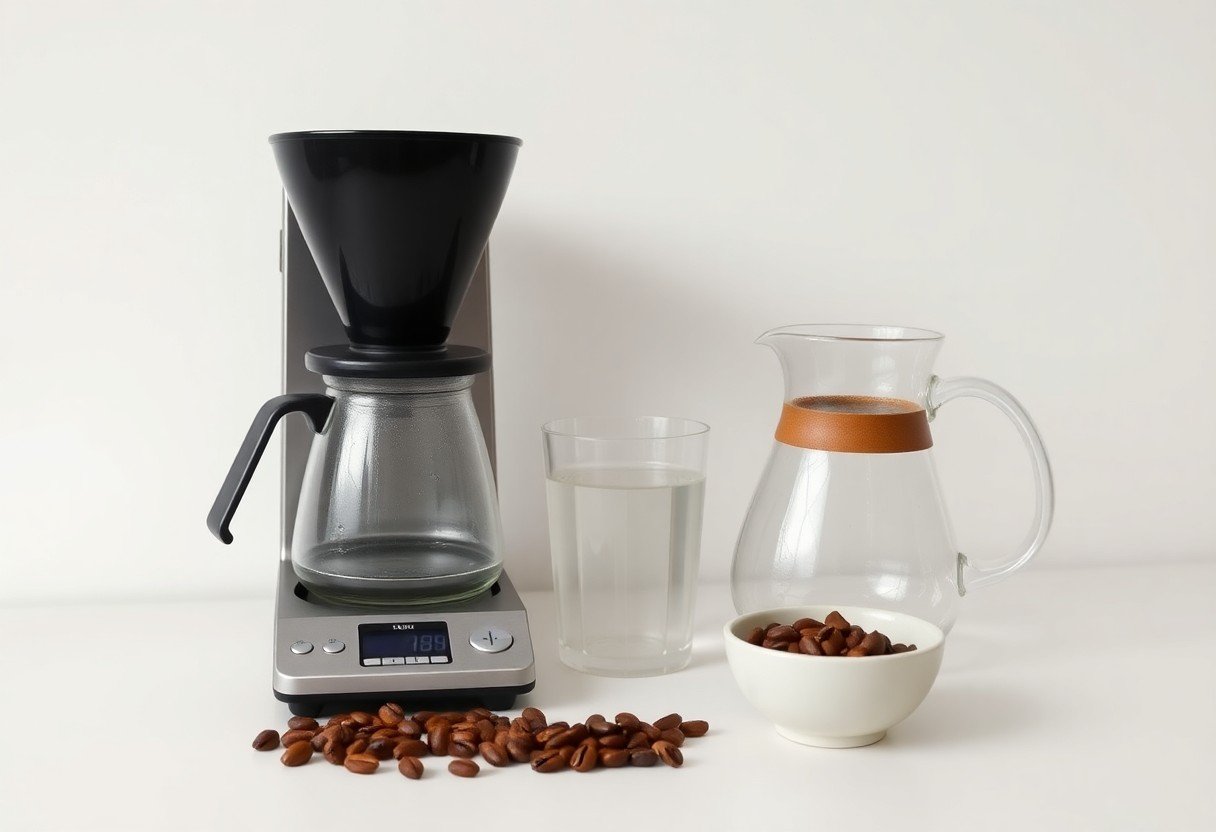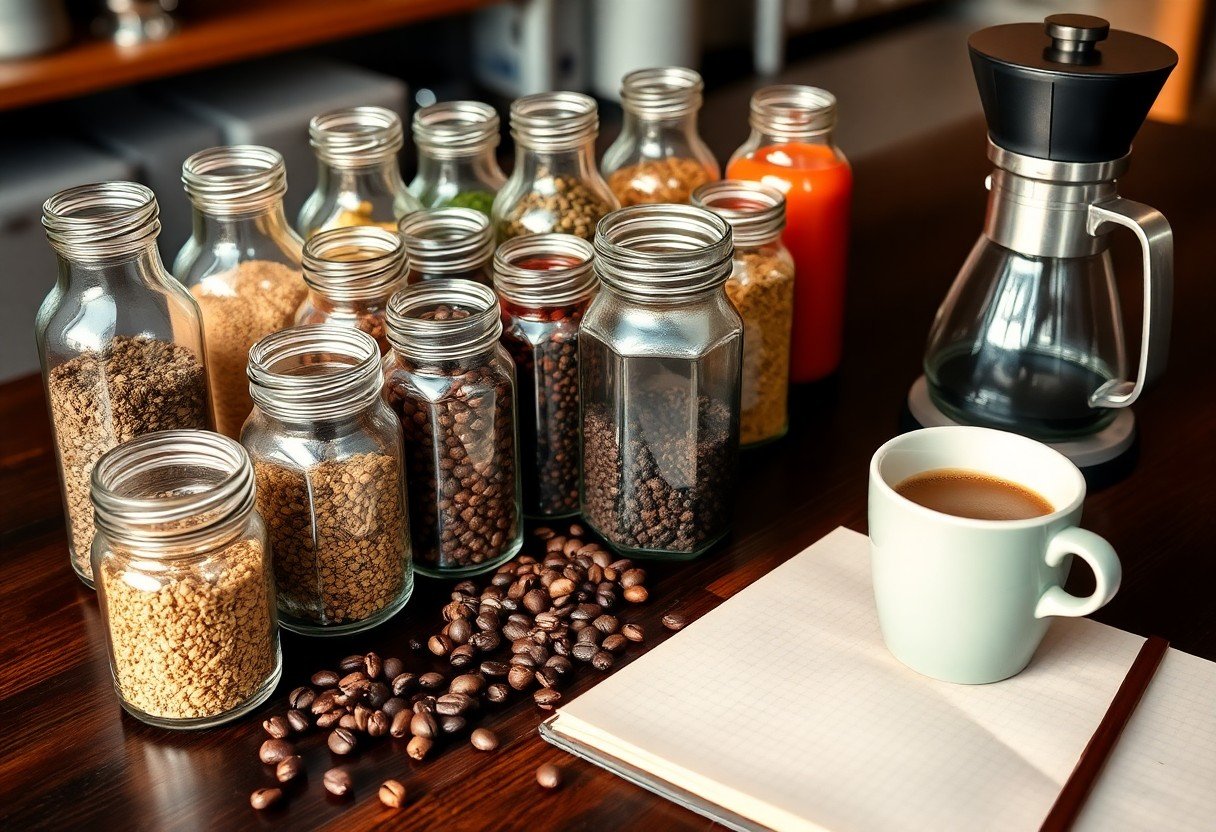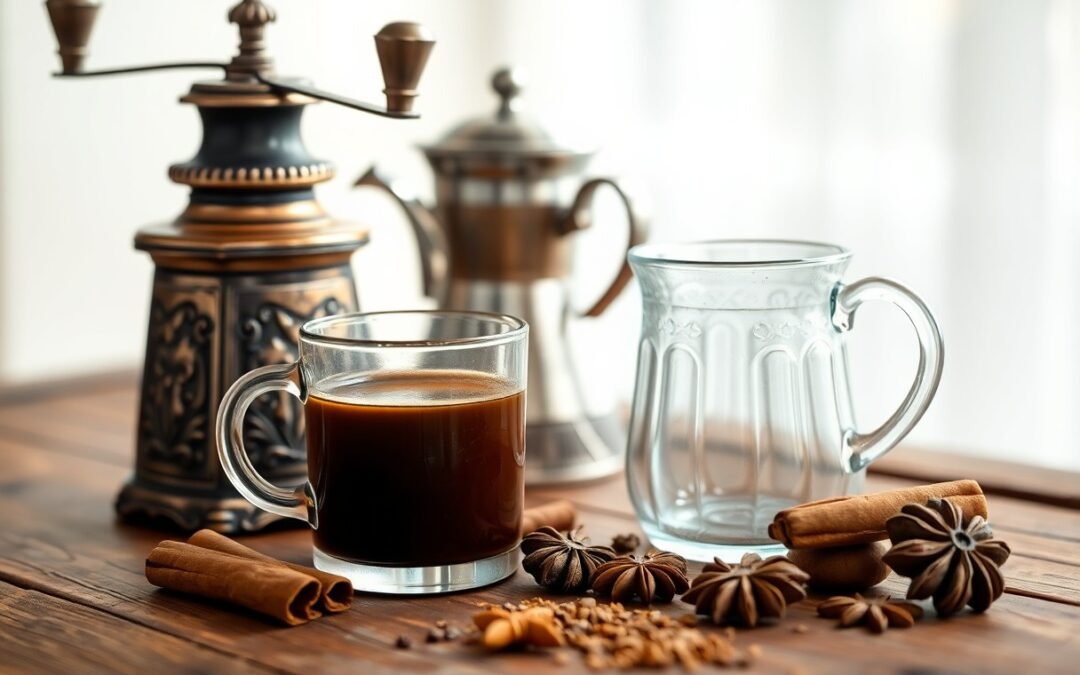With the right esoteric tools at your disposal, you can elevate your coffee brewing experience from mundane to extraordinary. This post will guide you through various unique instruments and methods that can enhance flavor, improve aroma, and refine your overall ritual. By integrating these tools into your process, you’ll not only transform your brew but also deepen your appreciation for every cup you enjoy.
The Alchemy of Ingredients
The transformation of a simple brew into a cultivated cup begins with understanding the vital components that make up your coffee. Each element, from bean selection to water quality, holds the potential to enhance or obscure the intricate flavors you seek to highlight. Mastering these elements paves the way for a consistently exceptional coffee experience, guiding you through the alchemical process that turns mere ingredients into a sublime beverage.
Selecting Premium Beans: The Foundation of Flavor
Your choice of coffee beans lays the groundwork for all flavors in your brew. Opt for freshly roasted beans sourced from reputable growers to ensure optimal taste profiles. Single-origin beans deliver unique characteristics reflective of their regions, allowing you to explore diverse flavor notes, from fruity to nutty. Pay attention to roast levels, as they will also considerably shift flavor experiences, enabling you to find the perfect match for your palate.
The Role of Water Quality in Brewing Perfection
Water quality directly impacts the extraction process and overall flavor profile of your coffee. Minerals in water, including magnesium and calcium, can create balance, while impurities may lead to undesirable tastes. Utilizing filtered or bottled water free from contaminants allows the nuances of your carefully selected beans to shine through, making it an important factor in achieving that cultivated cup.
Water accounts for about 98% of your brewed coffee, meaning its characteristics significantly shape your drinking experience. Ideal water has a balanced mineral content of around 150 parts per million (ppm), contributing to an optimal extraction of oils and flavors from the beans. Avoid distilled or overly soft water, as it can result in flat, lifeless brews. Always measure your water temperature precisely; ideally, it should be around 195°F to 205°F to extract the full spectrum of flavors without scorching the beans. Investing in quality water can make a profound difference in achieving that rich, full-bodied taste you aim for.
Tools of the Trade: Elevating the Brewing Experience
Your brewing experience transforms dramatically with the right tools. High-quality equipment not only streamlines your process but enhances the flavors and aromas of your brew. Whether you’re using a precision scale for measuring or a temperature-controlled kettle, these instruments refine your technique and help achieve consistency, allowing you to explore the full potential of each coffee origin with every cup brewed.
The Impact of Brewing Techniques on Taste
Specialty Equipment That Enhances Extraction

Rituals and Mindset: Brewing as an Art Form
Brewing transcends mere preparation; it evolves into an art form that engages all your senses. Each step, from selecting beans to sipping the final brew, invites a mindful exploration of flavors. Embracing this perspective allows you to appreciate nuances often overlooked, transforming everyday coffee-making into a sacred ritual infused with intention and creativity.
The Importance of Conscious Brewing Practices
Conscious brewing fosters a deeper connection to your coffee, enhancing both flavor and experience. By focusing on each element—from the origin of the beans to the water’s temperature—you create a dialogue with the ingredients. This mindfulness not only enriches your appreciation but also cultivates a sense of respect for the craft, emphasizing the journey over the destination.
Creating a Personal Brewing Ritual
A personal brewing ritual anchors your experience, providing structure and meaning to your daily routine. Whether it’s dedicating time to select your beans or incorporating specific brewing techniques, infusing your unique flair transforms the process. Notably, rituals establish a moment of pause in your day, allowing you to engage with the flavors more deeply.
Your personal brewing ritual can incorporate specific elements that resonate with you, such as using a favorite mug, playing ambient music, or engaging in a meditative practice while waiting for the brew. Consider the scents, textures, and visual elements that you enjoy. Over time, you can refine this ritual to reflect your evolving taste and preferences, making each brewing session a distinctive celebration of your evolving coffee journey. Incorporating a consistent timeframe each day can also reinforce this practice, allowing you to approach your brew with anticipation and joy.

Flavor Profiling: Navigating Tastes and Aromas
Flavor profiling equips you to discern and appreciate the intricacies within your brew. Each cup offers a tapestry of taste, inviting you to explore its various notes, ranging from fruity to earthy. By understanding these nuances, you can tailor your brewing methods to accentuate specific aromas, creating a more cultivated cup that reflects your preferences and enhances your sensory experience.
Understanding Flavor Notes and Their Origins
Flavor notes are the distinctive characteristics that define your brew, often stemming from the origin of the coffee beans, processing methods, and roasting techniques. Knowledge of these origins allows you to identify specific notes such as citrus, chocolate, or floral, enhancing your appreciation for each cup. Appreciating the geographical nuances—like Ethiopian beans often showcasing bright acidity versus Brazilian beans with nutty undertones—transforms your brewing experience into a flavorful journey.
The Influence of Temperature and Time on Flavor Release
Temperature and time significantly impact the extraction of flavors from your coffee grounds. Higher temperatures accelerate extraction, often releasing more acidity and brightness, while lower temperatures offer a smoother, softer profile. Respecting optimal brew times ensures the right balance; over-extraction can lead to bitterness, while under-extraction may result in a lackluster cup. Adjusting these elements allows you to fine-tune your respect for flavor nuances.
Factors Influencing Flavor Release
| Temperature Range | Flavor Outcome |
| 90-95°C | Balanced, full spectrum of flavors |
| 85-90°C | Smoother, softer profile |
| Over 95°C | Increased bitterness, over-extraction |
Adjusting temperature during brewing profoundly affects flavor. For instance, brewing coffee around 93°C can produce a well-rounded cup, while lowering the temperature below this threshold may highlight softer notes and reduce astringency. Time also plays a critical role; a typical drip coffee can take 4-5 minutes, while a French press requires about 3-4 minutes. Understanding this interplay allows you to manipulate these parameters for personalized flavor results.
Detailed Breakdown of Brewing Time Influence
| Brewing Time | Effects on Flavor |
| 1-2 minutes | Under-extraction, sour notes |
| 3-4 minutes | Optimal balance of acidity and sweetness |
| 5+ minutes | Over-extraction, bitterness, and harshness |
Community and Culture: The Social Aspect of Brewing
Your coffee experience deepens significantly through the connection fostered in shared moments. Participating in communal brewing or coffee tastings allows you to exchange thoughts and feelings about flavors, elevating the ritual to an engaging social affair. These interactions often pave the way for friendships, strengthening your bond with coffee culture and expanding your palate.
The Role of Shared Experiences in Cultivating a Love for Coffee
Shared experiences are pivotal in igniting your passion for coffee. When you brew or enjoy coffee with others, stories and preferences emerge, enhancing your understanding and appreciation of different beans and brewing methods. Bonding over coffee not only builds community but also enriches your admiration for the craft.
Exploring Coffee Subcultures and Their Unique Rituals
Diving into the world of coffee subcultures reveals a rich tapestry of unique rituals that enhance appreciation. From the meticulous Japanese pour-over techniques to the energetic Turkish coffee ceremonies, each culture offers distinctive traditions influencing flavor profiles and brewing methods. Your understanding of these rituals adds depth to your experience, connecting you to coffee enthusiasts globally.
In Italy, for instance, the espresso bar culture invites patrons to savor their shots quickly while standing at the counter, representing efficiency and social connection. Alternatively, the Scandinavian concept of “fika” promotes coffee breaks as vital social rituals filled with pastries and conversations. These traditions not only celebrate coffee-making but also foster a sense of community and connection among aficionados, inviting you to explore and appreciate each practice’s nuances and stories. Engaging with these subcultures can transform your brewing habits and inspire a deeper connection with the coffee community.
Final Words
Conclusively, the transformation of a simple brew into a cultivated cup relies on a blend of esoteric tools that enhance your brewing experience. By incorporating precision scales, quality grinders, and temperature-controlled kettles, you elevate the extraction process. Additionally, using specialized vessels like pour-over cones or French presses allows you to exert greater control over flavor profiles. Embracing these tools not only enriches your palate but also deepens your connection to the art of brewing, ultimately leading to a more satisfying cup every time.
FAQ
Q: What are the necessary tools for brewing a cultivated cup of coffee?
A: Essential tools include a high-quality coffee grinder, a pour-over brewer, a scale for measuring coffee and water, a kettle with temperature control, and a thermometer to monitor brew temperature.
Q: How does a grinder impact the quality of the brew?
A: A grinder influences the extraction process; a consistent grind size for different brewing methods helps achieve uniform extraction, enhancing flavor and aroma in the final cup.
Q: Why is water temperature important in coffee brewing?
A: Water temperature affects extraction; too hot can over-extract and lead to bitterness, while too cool can under-extract, resulting in weak flavors. The ideal range is typically between 195°F and 205°F.
Q: How does the brewing method affect flavor profiles?
A: Different brewing methods, such as pour-over, French press, or espresso, highlight different aspects of flavor due to variations in brewing time, pressure, and coffee-to-water ratios, creating unique taste experiences.
Q: Can the origin of the coffee beans influence the final brew?
A: Yes, the origin affects acidity, sweetness, body, and flavor notes. Factors like soil, climate, and processing methods contribute to the distinct taste characteristics of each coffee origin.

